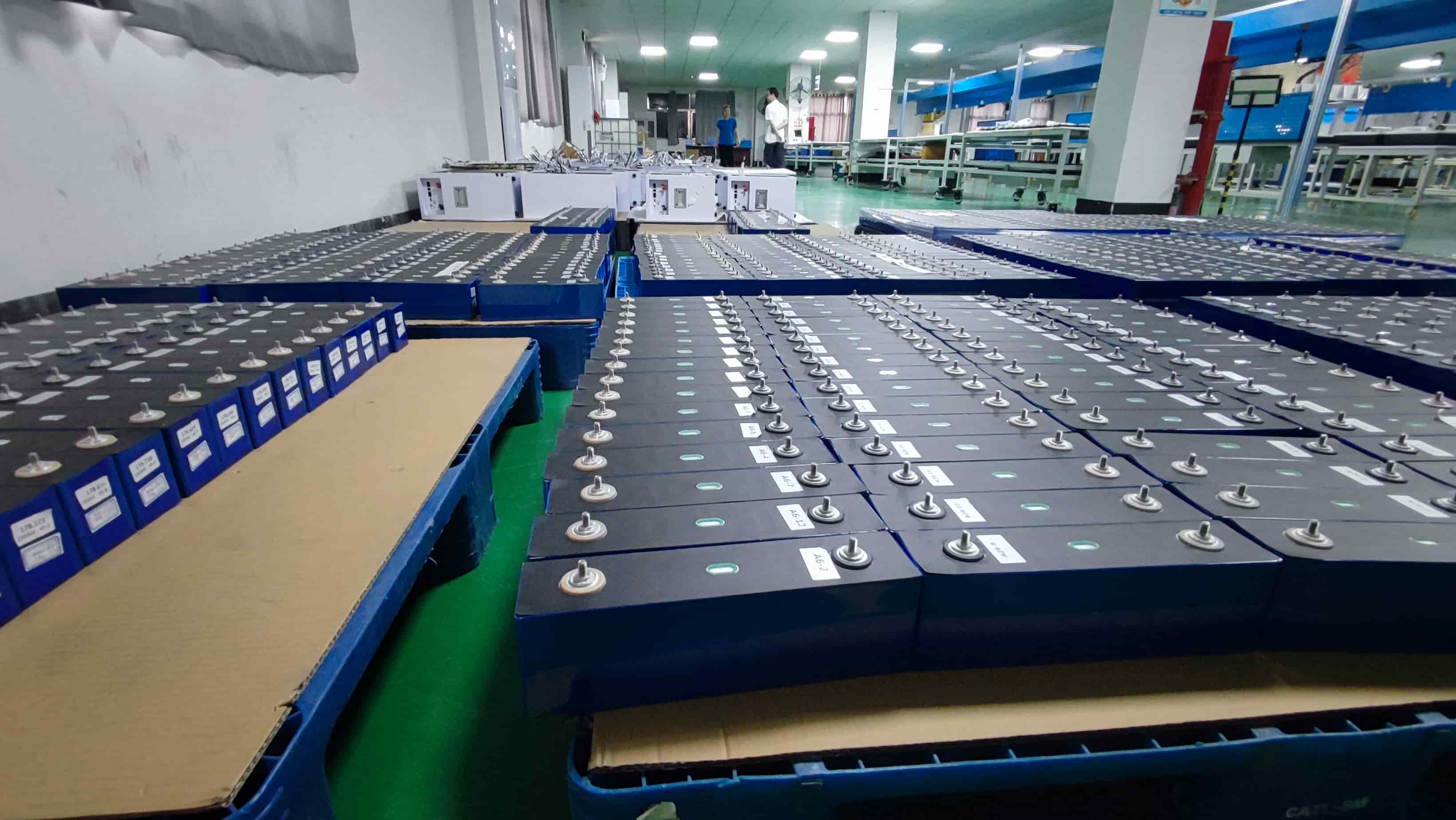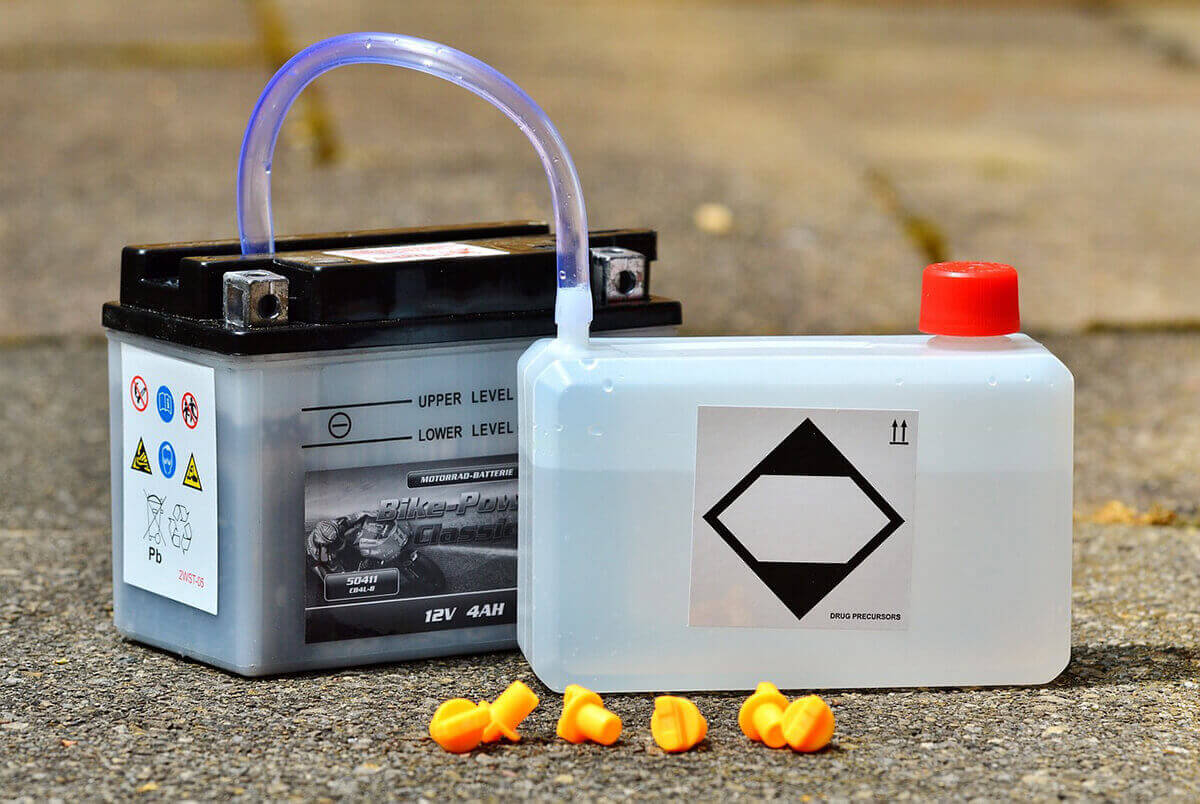Safety Demystified: Can Lifepo4 Batteries Really Explode?

The use of lithium-ion batteries, such as lifepo4 batteries, is becoming increasingly popular in consumer electronics and energy storage applications due to their high power density, long cycle life and low self-discharge rate. However, the potential for a battery explosion always exists when using these types of rechargeable cells.
It is important for those who use or work with lifepo4 batteries to understand the risks involved and take appropriate safety precautions. This article will discuss the possible causes of a battery explosion, how to prevent them from occurring, and what should be done if an explosion occurs.
Explosions can occur when heat builds up within a battery cell faster than it can be dissipated. This phenomenon is known as thermal runaway, which leads to an uncontrolled increase in temperature inside the cell until its outer casing ruptures or melts due to excessive pressure buildup.
In order to minimize the risk of explosions caused by this process, proper charging techniques should be used with all lifepo4 batteries and they should not be overcharged beyond their rated capacity.
Additionally, any damaged or defective batteries should never be used as they could easily reach temperatures higher than normal during operation and cause an internal fire or explosion.
In addition to thermal runaways, other external factors such as short circuits or mechanical shock may also lead to battery explosions. To reduce the likelihood of these occurrences happening it is essential that safe handling practices are observed at all times including careful transportation procedures designed specifically for protecting sensitive electronic components like lifepo4 batteries from vibration or impact damage.
Furthermore, users must ensure that no metal objects come into contact with any exposed terminals on their devices since this could create a dangerous electrical arc capable of causing significant damage or even triggering a fire or explosion.
Definition Of A Lithium-Ion Battery
Lithium-ion batteries are a type of energy storage device used in many products and applications. They are the most popular battery technology today, with over 5 billion units produced worldwide per year. To understand how these batteries work, it is first necessary to define their components and chemistry.
Lithium-ion batteries consist of two electrodes, an anode and a cathode, separated by a separator. The anode typically consists of graphite or carbon while the cathode is composed of lithium-phosphate. A non-organic electrolyte serves as an ion conductor between the electrodes.
When charging a lithium-ion battery, positively charged ions leave the cathode and travel through the electrolyte toward the negative electrode. Upon discharge, this process reverses and electrons move from the negative electrode to power electrical devices.
The charge capacity of lithium-ion cells depends on several factors such as cell temperature. As one can see, understanding how lithium-ion batteries store energy requires knowledge of both chemical and electrical processes.

In order to ensure safety during use, manufacturers often incorporate protection circuits(BMS) into their designs. These circuits monitor a variety of parameters such as voltage levels or current flow.
If any potential hazard arises due to abnormal conditions within the battery, these protection mechanisms will shut down the operation for added security. By utilizing advanced engineering principles along with modern materials, lithium-ion batteries have become reliable sources of stored energy.
What Is A Lifepo4 Battery?
LiFePO4, also known as lithium-iron-phosphate, is a type of rechargeable battery that has become increasingly popular in the last few years. This battery chemistry offers numerous advantages when compared to other types of batteries and can be found powering everything from electric vehicles to portable electronics. LiFePO4 batteries are highly reliable and offer excellent performance over extended periods of time.
The biggest advantage of LiFePO4 batteries is their safety profile; they are non-flammable and have extremely low self-discharge rates compared to other chemistries such as lead acid or nickel metal hydride (NiMH). Furthermore, LiFePO4 cells are capable of withstanding high temperatures without any risk of thermal runaway or explosion. This makes them an ideal choice for applications where reliability and safety are critical.

Here is a list of some key benefits associated with LiFePO4 batteries:
- Longer Battery Life - The use of advanced materials allows LiFePO4 cells to retain more charge than traditional cell chemistries, leading to increased cycle life and longer runtimes between charges.
- Improved Safety Profile - As mentioned previously, the lack of flammability associated with this chemistry makes it much safer than other types of batteries on the market today. Additionally, these cells do not suffer from the memory effects so there's no need for periodic deep discharges for optimal performance.
- Increased Power Density - Due to their lightweight construction and higher energy density per unit weight, LiFePO4 cells can deliver more power than conventional cells while occupying less space. This makes them particularly suitable for applications where size and weight restrictions apply.
- Greater Efficiency - With efficiencies up to 95%, these cells allow you to maximize your available power by using less electricity overall.
Overall, LiFePO4 technology provides users with a safe and reliable way to store electrical energy in a variety of applications ranging from consumer electronics to industrial systems. Combined with its long lifespan, improved safety features, increased power density, and greater efficiency capabilities this chemistry has established itself as one of the go-to solutions for many people looking for a reliable source of stored energy.
Potential Dangers Of Using Lifepo4 Batteries
The potential dangers of using LiFePO4 batteries are absolutely staggering. Despite their many advantages, such as being lightweight and having a long life cycle, these battery cells can be extremely hazardous if not used correctly. With great power comes great responsibility; it is imperative to understand the risks associated with LiFePO4 in order to use them safely.
When it comes to safety hazards, LiFePO4 batteries do carry a risk of explosion or fire - though this is rare when proper precautions are taken. It is important for users to take all necessary steps to prevent any adverse events from occurring during the charging and discharging processes.
This includes monitoring temperature levels, ensuring correct polarity connections, avoiding overcharging/over-discharge states, and not shorting the battery terminals by accident. Additionally, always store LiFePO4 batteries in an environment that has adequate ventilation and away from combustible materials like paper or plastics.
If you're still feeling unsure about using LiFePO4 batteries due to safety concerns, there are alternatives available on the market today such as lead acid or nickel–metal hydride (NiMH) rechargeable batteries. Both offer similar performance characteristics without the same level of risk posed by LiFePO4s so they may be better suited for certain applications where safety is paramount.
However, keep in mind that all types of batteries must be handled with care regardless of chemistry type - no battery should ever be abused or neglected!
Ultimately, understanding how lifepo4 works alongside its associated risks are key to safe operation and prevention of any potentially dangerous scenarios. Taking appropriate measures such as following instructions carefully and being mindful of storage conditions will help minimize the chances of accidents occurring while enjoying the benefits of LiFePO4 technology.
How Lifepo4 Batteries Work
LiFePO4 batteries are an upgrade to the traditional Lithium-Ion technology. Through its unique chemistry, LiFePO4 cells offer a number of advantages over other rechargeable battery technologies. Understanding how these cells work is key in ensuring safe use and a longer lifespan for your LiFePO4 battery packs.
The components of a LiFePO4 cell include two electrodes (anode and cathode), a separator, and an electrolyte solution between them. The anode consists of lithium iron phosphate which gives this type of battery its name, while the cathode contains carbon materials that act as conductors for the electrons during charge cycles.
By utilizing specialized chemical reactions, these electrodes convert energy into electrical current when charging or discharging the battery.
At full capacity, LiFePO4 provides more power than traditional Lithium-Ion batteries while also having high thermal stability and low self-discharge rate due to its unique chemical makeup. This allows it to be used safely under various conditions without fear of explosion or fire hazards like those seen with other types of batteries.
Additionally, due to its increased durability against extreme temperatures and rough handling, LiFePO4 can provide up to 2000 charge cycles compared to 500 from traditional Lithium-Ion batteries - thus increasing the overall lifespan of any device powered by them.
When properly handled and maintained, LiFePO4 cells can provide reliable performance for years to come with the minimal risk associated with their use compared to other technologies on the market today. With proper safety protocols in place such as not overcharging or short-circuiting the pack, users can trust in the dependability offered by this advanced lithium-ion technology.
Common Causes Of Battery Explosions
What causes a battery to explode? The answer is complex and can vary depending on the type of battery. In general, however, lithium-ion batteries are more prone to exploding than other types due to their higher energy density and instability when exposed to extreme temperatures or overcharging.
This applies particularly to Lithium Polymer (LiPo) and Lithium Iron Phosphate (LiFePO4) batteries, which have been known to be volatile if not properly handled or stored.

There are many common factors that can contribute to an explosive reaction in these types of batteries:
- Overcharging: This is one of the culprits of an explosive reaction, as applying too much current can cause too much heat to build up inside the battery, causing it to become unstable and possibly catch fire.
- Extreme Temperatures: Extreme temperatures such as freezing weather or extreme heat conditions can also lead to a thermal runaway event, where a battery releases a large amount of energy instantly, resulting in an explosion.
- Excessive internal pressure: Poor design issues such as insufficient ventilation systems can also cause an explosion if the internal pressure of the battery is too high.
- Improper installation procedures: such as connecting two different batteries together with mismatched resistances, can lead to catastrophic failure as they draw more power than intended, causing them to overheat and eventually burn.
- Improper Disposal: Throwing away a used Lithium Polymer/Lithium Iron Phosphate battery without taking proper safety precautions may also cause unintended reactions, which could pose a danger to those nearby.
It’s important therefore for everyone dealing with these kinds of chemicals to take extra caution when handling them and equip themselves with knowledge about potential hazards associated with them before attempting any operations involving them.
Protective Measures To Avoid Explosions
Battery protection is essential to avoiding explosions from LiFePO4 batteries. Safety precautions should always be taken when working with them, handling them, and charging them. To prevent an explosion, it is important to adhere to the manufacturer’s instructions.
- The first safety precaution that must be observed is temperature control during storage and the use of lifepo4 batteries. Ideally, they should not exceed 40 degrees Celsius in any situation; otherwise, overheating could lead to a thermal runaway reaction that can cause an explosion or fire hazard.
- Additionally, users should avoid overcharging the battery by following the recommended charge limit according to their device's specifications. This will help ensure that no potential damage occurs due to high levels of current passing through the cells which could lead to a catastrophic failure resulting in an explosive event.
- Finally, lithium-ion storage requires special attention as well. It is necessary for users to store these types of batteries in a cool place away from direct sunlight and extreme temperatures since both have been known to cause hazardous reactions leading up to an explosion or fire.
- When storing multiple batteries together make sure there are protective separators between each one so they do not come into contact with one another and cause a short circuit which could also result in an explosive event.
In summary, taking proper care of lifepo4 batteries can reduce the risk of dangerous situations such as explosions or fires caused by mishandling or improper storage conditions. By adhering closely to all safety guidelines provided by manufacturers and utilizing good common sense practices when managing your devices' power sources you can greatly minimize the chance of experiencing any unfortunate events related to LiFePO4 battery usage.
Testing And Maintenance For Safety
Safety protocol testing is an important part of maintaining a safe environment when using any type of battery, including lifepo4 batteries. Testing should be conducted regularly to ensure that the battery is in good operating condition and meets all safety requirements. Additionally, it is essential for users to adhere to recommended maintenance practices for optimal performance and safety.
The following table outlines some key points of battery testing and maintenance:
| Testing & Maintenance | Description |
|---|---|
| Lifepo4 Battery Testing | Test batteries at least once every six months or more frequently if needed |
| Battery Maintenance Safety | Ensure that all cables are securely connected; replace damaged parts with original manufacturer components only; inspect terminals for corrosion; check electrolyte levels periodically |
| Lithium-ion Battery Testing | Perform regular voltage tests on lithium-ion cells; use specific charge profiles appropriate for their chemistry; monitor temperature during charging/discharging cycles; never exceed the maximum discharge current rating or allow deep discharges below 2 volts per cell |
| Lifepo4 Battery Maintenance | Never overcharge - refer to the manufacturer's instructions regarding recharging intervals; store correctly and maintain storage charge as indicated by the manufacturer according to ambient temperatures; avoid short circuits across terminals always disconnect the negative terminal first when removing cable connections |
It is vital for users to understand how proper testing and maintenance can help prevent potential hazards associated with lifepo4 batteries. Regularly inspecting the battery will provide assurance that it is functioning optimally and safely. Furthermore, adhering to recommended maintenance procedures helps extend its life expectancy. By understanding these elements, users will have greater control over their overall experience with this technology.
Advantages Of Lifepo4 Batteries
LiFePO4 batteries are becoming increasingly popular due to their many advantages. One of the major benefits is the longer battery life compared to other types of rechargeable batteries. Additionally, they have a much lower self-discharge rate than comparable technologies, meaning they can be stored without losing charge.
LiFePO4 cells also offer a significant weight reduction when compared with traditional lead-acid or nickel-cadmium batteries; this lighter weight helps make them easier to transport and install in various applications.
Furthermore, LiFePO4 batteries are more environmentally friendly because of their non-toxic components and lack of hazardous materials, so these cells provide one of the highest safety ratings among all types of rechargeable batteries. This makes them ideal for use in medical devices or electric vehicles where safety is paramount.
In addition to providing users with greater control over power management, LiFePO4 batteries also offer enhanced performance and convenience while remaining reliable and safe even during prolonged use. Thanks to improved energy density and longer cycle life, these cells help reduce operational costs by eliminating frequent battery replacement.
Combined with their higher safety rating and reduced environmental impact, LiFePO4 batteries offer an attractive option for those looking for advanced storage solutions that deliver superior results at an affordable price point.
Disadvantages Of Lifepo4 Batteries
Lithium Iron Phosphate (LiFePO4) batteries have been gaining popularity in recent years due to their numerous advantages over other types of batteries, such as high energy density, longer lifespan, and faster charging times. However, like any other technology, LiFePO4 batteries also have their downsides.
(1) Cost
LiFePO4 batteries are more expensive than other types of batteries, such as lead-acid and nickel-cadmium batteries. This is due to the fact that LiFePO4 batteries use a more advanced and expensive manufacturing process. Additionally, the cost of the raw materials used in LiFePO4 batteries, such as lithium and iron, has increased in recent years, making the batteries even more expensive.
(2) Lower energy density
Although LiFePO4 batteries have a higher energy density than lead-acid and nickel-cadmium batteries, they have a lower energy density compared to other types of lithium-ion batteries, such as lithium-cobalt batteries. This means that LiFePO4 batteries will have a lower energy capacity than other lithium-ion batteries of the same size and weight.
(3) Lower voltage
LiFePO4 batteries have a lower voltage compared to other types of lithium-ion batteries. This means that they may not be suitable for applications that require high voltages, such as electric vehicles.
(4) Size and weight
LiFePO4 batteries are larger and heavier compared to other types of lithium-ion batteries with the same energy capacity. This can be a disadvantage in applications where size and weight are critical, such as portable electronic devices.
(5) Charging rate
LiFePO4 batteries have a slower charging rate compared to other types of lithium-ion batteries. This means that it can take longer to charge a LiFePO4 battery fully.
(6) Limited availability
LiFePO4 batteries are not as widely available as other types of batteries. This can make it difficult to find replacement batteries if one needs to be replaced, or if one needs to be added to an existing system.
In conclusion, LiFePO4 batteries have several disadvantages that need to be considered before choosing them for a specific application. The higher cost, lower energy density, lower voltage, larger size and weight, slower charging rate, and limited availability are all factors that may make LiFePO4 batteries less suitable for some applications.
However, LiFePO4 batteries still have many advantages over other types of batteries, and they may be the best choice for certain applications where their strengths can be fully utilized.
Alternatives To Lifepo4 Batteries
When considering alternatives to LiFePO4 batteries, there are a number of different options. These include:
- Lead-acid: The most common type of battery on the market today is lead-acid. This technology has been around for decades and is still used in many applications such as automotive, solar energy storage, and industrial purposes. It offers great performance at a relatively low-cost point.
- Nickel-cadmium (NiCd): NiCd batteries offer better cycle life than lead acid but require more maintenance due to their higher self-discharge rate. They also tend to be heavier which can impact portability depending on the application.
- Zinc-air: Zinc-air batteries are an emerging technology that has seen increased interest recently due to their high specific energy density and potential for use in consumer electronics or medical devices. However, they have not yet achieved widespread commercial success due to safety concerns associated with their chemistry.
- Alkaline Manganese: Alkaline manganese cells provide good power output in small form factors and are often found in disposable flashlights or toys. While these types of batteries do not typically pose any significant safety risks, their limited capacity makes them unsuitable for most applications requiring long run times or extended life cycles.


In order to determine which type of battery is right for your application needs it’s important to consider various factors such as available space constraints, operating temperature range, desired voltage/capacity requirements, expected lifespan/duty cycle length, budget considerations etcetera before making a final decision.
Additionally, it’s essential to consider all relevant safety precautions related to each individual battery type prior to installation or operation so as avoid any unwanted damages or injuries from occurring down the line.
Conclusion
In conclusion, LiFePO4 batteries are an exceptional energy storage solution for a variety of applications due to their high power density and long cycle life. Their use must be carefully managed in order to prevent catastrophic battery explosions from occurring. The key is to ensure proper testing and maintenance of the cells as well as following all safety guidelines provided by manufacturers.
By taking these measures one can feel safe that they have taken all necessary precautions to avoid any potential dangers associated with using LiFePO4 batteries. Like a fortress wall around a city, regular inspections and adherence to safety protocols will create a barrier of protection against the risk of explosion when using this type of battery technology.
